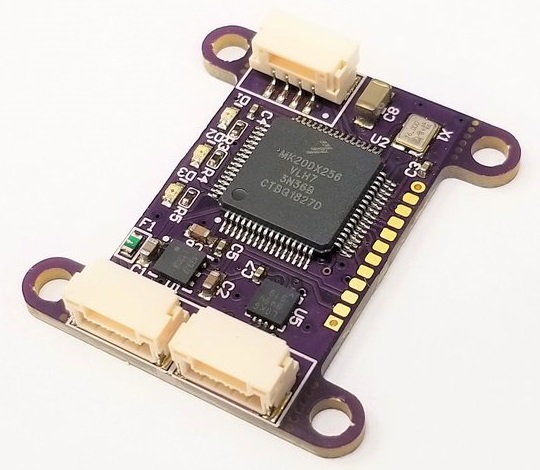# Avionics Anonymous Laser Altimeter UAVCAN Interface
The Avionics Anonymous Laser Altimeter Interface allows a number of common rangefinders to be connected via the UAVCAN bus (this is a more robust interface than I2C).

# Where to Buy
# Supported Rangefinders {#supported_rangefinders}
A full list supported rangefinders can be found on the link above.
At time of writing the following rangefinders are supported:
- Lightware SF30/D
- Lightware SF10/a
- Lightware SF10/b
- Lightware SF10/c
- Lightware SF11/c
- Lightware SF/LW20/b
- Lightware SF/LW20/c
# Pinouts
# CAN Connector
| Pin | Name | Description |
|---|---|---|
| 1 | POWER_IN | Power Supply. 4.0-5.5V supported, but must also be compatible with connected laser. |
| 2 | TX/SCL | TX for serial mode, Clock for I2C mode |
| 3 | RX/SDA | RX for serial mode, Data for I2C mode |
| 4 | GND | Signal/power ground. |
# Laser Connector
| Pin | Name | Description |
|---|---|---|
| 1 | POWER_OUT | Filtered power at the supply voltage. |
| 2 | CAN+ | TX for serial mode, Clock for I2C mode |
| 3 | RX/SDA | RX for serial mode, Data for I2C mode |
| 4 | GND | Signal/power ground. |
# Wiring
The rangefinder (laser) is connected to the AvAnon interface board, which is connected to one of the CAN ports on your autopilot. The wiring is as per the pinout above, or the necessary cables can be purchased to connect to your system right out of the box. These are available at the links here.
The interface board provides a filtered power output for the laser, but does not provide its own regulation. Therefore the laser must be compatible with whatever voltage is supplied to the board.
# Software Configuration
UAVCAN must be enabled by setting UAVCAN_ENABLE non zero.
The minimum and maximum valid range for the laser must be set in the parameters UAVCAN_RNG_MIN and UAVCAN_RNG_MAX.